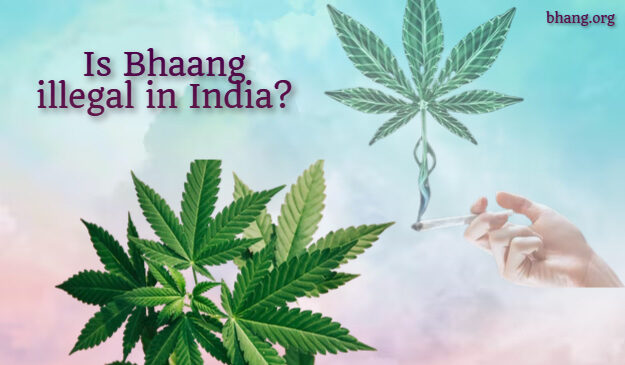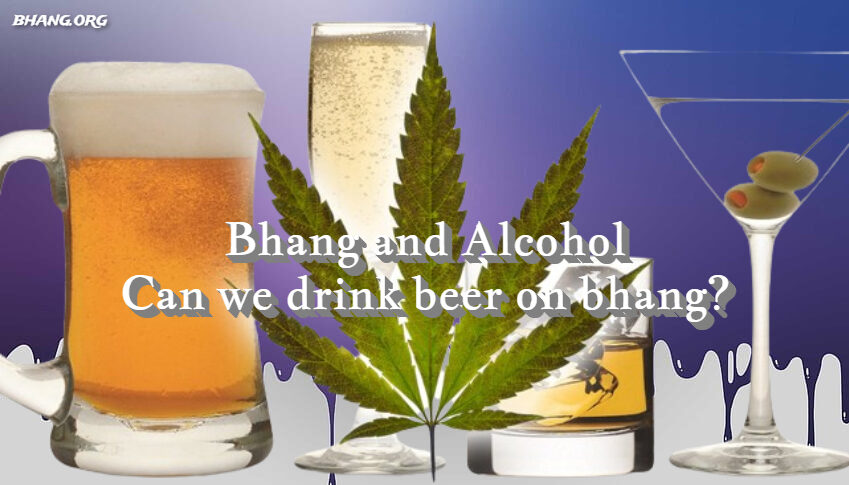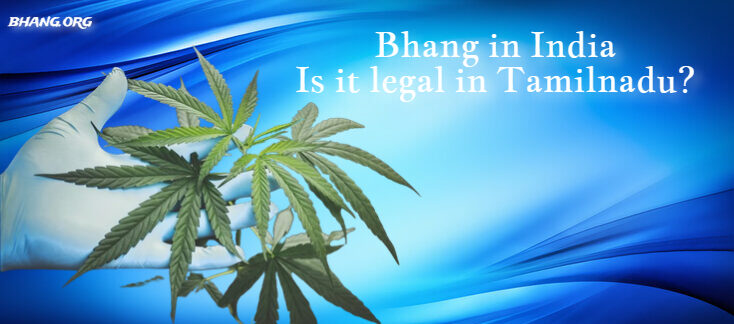
Bhang in India: Is Bhaang illegal in India?
Is Bhaang illegal in India: It’s intriguing how a country imposing heavy taxes of 28% on tobacco and 18% on alcohol allows the open sale of a drug through government-licensed shops. Despite strict bans during the British colonial era, this drug managed to evade prohibitions. Moreover, even religions show tolerance towards its use.
India’s history has long been intertwined with cannabis, particularly its derivative known as Bhang. It’s deeply rooted in Indian culture, commonly consumed during festivals like Holi and Shivratri. Its usage dates back to around 400 BCE, with mentions in Vedic scriptures. Presently, according to the ‘Magnitude of Substance Use in India, 2019’ report by the Ministry of Social Justice and Empowerment, more Indians consume Bhang (2%) compared to Charas or Ganja (1.2%). States like Punjab, Sikkim, Uttar Pradesh, Chhattisgarh, and Delhi exhibit higher prevalence of Bhang consumption. Before delving into such statistics, it’s essential to grasp the meaning of ‘Bhang’.
So, What is Bhang?
Bhang is defined under the NDPS policy as an edible preparation crafted from the leaves of the readily available herb, Cannabis sativa. Cannabis, being of herbal origin, contains potent constituents such as Cannabinoids, Terpenes, and Flavonoids. With over 100 recorded Cannabinoids in Cannabis plants, THC and CBD are among the most notable. When the THC content in a cultivar exceeds 0.3%, it gains psychoactive properties, capable of inducing a ‘high’ post-consumption. Charas, Bhang, Hashish, and ganja stem from cultivars with elevated THC levels. While Charas and Ganja originate from specific plant parts, Bhang and Hashish are derived from extracts. Technically, Bhang is solely prepared from cannabis leaves, whether male or female, sometimes incorporating the flowering part of the male plant. This preparation entails grinding the leaves and stems together to form a ground mixture. Thus, Bhang isn’t a distinct cultivar, name, or species, but rather a preparation derived from a Cannabis plant cultivar with relatively higher THC levels, capable of inducing a ‘high’.
The historical significance in context of India: Is Bhaang illegal in India
The historical significance in context of India-
India’s association with cannabis dates back around 2000 years. Over time, cultivation spread widely across the subcontinent, spanning regions from Kashmir to Kullu (Himachal Pradesh), Gujarat, southern Maratha country agency, central India, Assam, Bengal, Orissa, and the Madras presidency. Among these regions, the finest variety, known as baluchar, originated from the Ganja mahals of Bengal. While many households practiced clandestine cultivation, cannabis became deeply integrated into social rituals, religious ceremonies, and daily life.
The culmination of this cultural connection was the creation of Bhang, a milder, edible preparation derived from cannabis. It became a cherished aspect of festivals, social gatherings, and hospitality customs, often served as beverages like thandai and lassi to combat the summer heat. In regions like Punjab and Berar, common people also indulged in Bhang fakirs, a blend of gur and bhang, to energize themselves during busy daily routines.
Religious Perspectives:
Sikhism: Shri Guru Nanak advised the Sikh community to abstain from intoxicants, including Bhang. Later, the Sri Guru Nanak Prabhandhak Committee imposed a ban on Bhang, although a sect known as the Nihangs continues to defy this prohibition, consuming a form of cannabis known as ‘Sukha’ or ‘sukhnidhaan’.
Hinduism: Bhang holds a special place in Hindu rituals, particularly associated with Lord Shiva, who is believed to favor it. It remains an integral part of Holi and Shivratri celebrations, deeply intertwined with the worship of Lord Shiva.
Islam: Cannabis gained popularity in the Muslim Middle East centuries after the Prophet’s death, suggesting its absence during his era. While the Quran does not explicitly forbid cannabis, it prohibits other fermented beverages. Nevertheless, cannabis was warned against by some Arab physicians, yet praised for its properties by writers and poets in the post-9th century Islamic world.
Buddhism: Different branches of Buddhism hold varying stances on intoxicants. While Theravada Buddhism strictly prohibits them, Mahayana discourages their use, and Vajrayana is more lenient, sometimes even endorsing it. Some interpretations of Buddhist ethics allow for the medicinal use of cannabis, provided it benefits oneself and others without causing harm.
Legal Position in India: Is Bhaang illegal in India
Legal Framework in India
India, as a signatory to three international conventions – the Single Convention on Narcotics (1961), the UN Convention on Psychotropic Substances (1971), and the UN Convention Against Illicit Traffic in Narcotic Drugs and Psychotropic Substances (1988) – was compelled to address non-medical use of narcotic drugs and psychotropic substances (NDPS). However, the legislative response to this obligation often entailed blind bans, neglecting the holistic picture of cannabis use, particularly in countries like India. As a result, the NDPS Act of 1985 was enacted to regulate various activities related to narcotics and psychotropic substances, prohibiting their production, possession, sale, transportation, and consumption.
Exemption for Bhang
While the NDPS Act explicitly bans the consumption of Charas and Ganja, Bhang, being made from cannabis leaves, remains exempted from such prohibitions. This exemption stems from the Act’s definition of Ganja as “the flowering or fruiting tops of the cannabis plant,” thereby excluding seeds and leaves when not accompanied by the tops. As Bhang is prepared from the leaves of the plant, it consequently falls outside the Act’s purview. Additionally, the Act does not specifically mention the term ‘Bhang,’ further contributing to its legal ambiguity.
National Policy on Narcotic Drugs and Psychotropic Substances
To further regulate the cultivation and use of Bhang in India, the National Policy on Narcotic Drugs and Psychotropic Substances was implemented. This policy legally defines Bhang as a preparation made solely from cannabis leaves, excluding flowering tops and resins. It establishes strict boundaries for the production and cultivation of cannabis for Bhang, permitting production only from wild cannabis plants and prohibiting commercial cultivation. The policy empowers individual states to determine regulations within their respective territories.
Rationale Behind Excluding Leaves and Seeds
The legislature’s decision to exclude seeds and leaves of the cannabis plant from the Act’s ambit stems from their negligible THC content, rendering Bhang the least potent cannabis preparation in India. This approach can be traced back to colonial times when detailed studies were conducted on the effects of cannabis on the Indian population. The Indian Hemp Drugs Commission Report concluded that banning Bhang would be unjustified, given its religious and cultural significance. Additionally, Bhang was deemed less harmful than alcohol or tobacco in the Indian context, further justifying its exemption from strict prohibitions.
Bhang can be considered a safer substance when used with proper guidance and in moderate amounts.
Bhang can be a safer option when used responsibly and in moderation, preferably under guidance. While it offers relaxation and potential medicinal benefits when taken in small doses, some individuals may seek it for its psychoactive effects. In such instances, dosage and concentration are crucial to avoid adverse effects, emphasizing the importance of cautious consumption to harness its therapeutic properties.
Benefits of Bhang: Is Bhaang illegal in India
- Acts as an antidepressant
- Functions as a natural painkiller
- Aids in weight loss
- Combats skin problems
- Inhibits the growth of cancer cells
- Treats nausea and vomiting
- Provides a cooling effect
- Utilized for managing mental disorders
- Effective in addressing seizures and epilepsy
- Possesses antibacterial properties
- Acts as an antiphlegmatic
- Exhibits analgesic properties
Side Effects of Bhang: Is Bhaang illegal in India
- Confusion
- Dry mouth
- Fatigue
- Anxiety
- Mood changes
- Increased heart rate
- Dizziness
- Headaches
- In rare cases, may lead to hallucinations, paranoia, panic attacks, nausea, and vomiting.
For those interested in exploring bhang beverages and delicacies, here are a few establishments offering them:
- Off Limits Coffee in Kasol: Serving Bhang coffee
- The Hemp Cafe in Pune: Offering specialties like ‘Bhang ka sandwich’
- Hemp Station in Calicut: Known for its hemp seed milkshake
- Doctor Bhang in Jaisalmer
- Special Lassi in Pushkar
- Gopa Chowk in Jaisalmer
- Blue Lassi Shop in Varanasi
- Sarkari Theka Bhang in Mathura
- Theka Bhang at Assi Ghat in Varanasi
- Hippie Island in Hampi
- Hatibagan in Kolkata
Conclusion:
Bhang, (Is Bhaang illegal in India) derived from the leaves of the cannabis plant, holds a significant cultural and religious importance in India. Despite its psychoactive effects, when consumed responsibly and in moderation, it offers potential medicinal benefits. The legal framework in India acknowledges its cultural significance and regulates its production and use accordingly, allowing it to coexist alongside strict regulations governing other narcotic substances.
FAQs about Is Bhaang illegal in India
What is Bhang and how is it prepared?
Bhang is an edible preparation made from the leaves of the Cannabis sativa plant. It is crafted by grinding the leaves and stems together to create a mixture.
What are the benefits of consuming Bhang?
Bhang offers various potential benefits, including acting as an antidepressant, natural painkiller, aid in weight loss, combatant of skin problems, inhibitor of cancer cell growth, treatment for nausea and vomiting, provider of a cooling effect, and management of mental disorders and seizures. It also possesses antibacterial and analgesic properties.
What are the potential side effects of consuming Bhang?
Some common side effects of consuming Bhang include confusion, dry mouth, fatigue, anxiety, mood changes, increased heart rate, dizziness, and headaches. In rare cases, it may lead to hallucinations, paranoia, panic attacks, nausea, and vomiting.
What is the current legal standing of Bhang in India?
Bhang remains exempted from strict prohibitions under the NDPS Act of 1985, as it is prepared solely from cannabis leaves, which are excluded from the Act’s definition of Ganja. Additionally, the National Policy on Narcotic Drugs and Psychotropic Substances governs its cultivation and use, permitting production only from wild cannabis plants under strict regulations.
Where can one find Bhang beverages and delicacies?
Various establishments across India offer Bhang beverages and delicacies, including Off Limits Coffee in Kasol, The Hemp Cafe in Pune, Hemp Station in Calicut, Doctor Bhang in Jaisalmer, Special Lassi in Pushkar, Gopa Chowk in Jaisalmer, Blue Lassi Shop in Varanasi, Sarkari Theka Bhang in Mathura, Theka Bhang at Assi Ghat in Varanasi, Hippie Island in Hampi, and Hatibagan in Kolkata.


